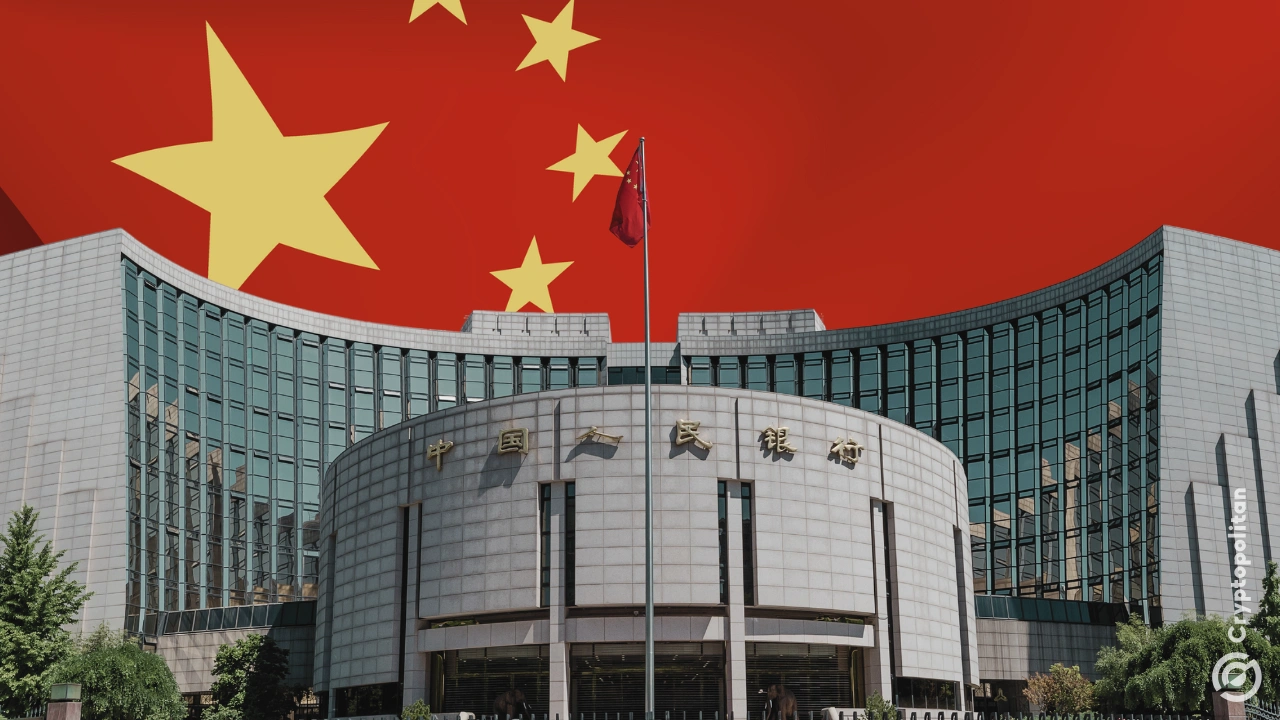The US-China trade tariff standoff could start a renewed capital flight from China into Bitcoin, according to crypto exchange BitMEX co-founder Arthur Hayes. The crypto KOL said patterns observed during previous yuan devaluations in 2013 and 2015 show that a weakening Chinese currency could bump up the demand for Bitcoin.
Per TradingEconomics data, the offshore Chinese yuan held steady near a two-month low at 7.35 per US Tuesday, against the backdrop of escalating hostilities between the world’s two largest economies.
On Monday, President Donald Trump announced plans to impose an additional 50% tariff on Chinese imports starting Wednesday, on top of existing duties totaling 54%. In response to last Wednesday’s US tariff announcement, Beijing pledged to “fight to the end” to protect its economic interests, slapping a 34% levy on all US imports to begin this Thursday.
Is Bitcoin a hedge for investors escaping falling Renminbi
“If not the Fed, then the PBOC will give us the yachtzee ingredients,” Hayes wrote on X Tuesday, referring to the People’s Bank of China. “CNY devaluation = narrative that Chinese capital flight will flow into BTC. It worked in 2013, 2015, and can work in 2025. Ignore China at your own peril.”
If not the Fed then the PBOC will give us the yachtzee ingredients.
CNY deval = narrative that Chinese capital flight will flow into $BTC.
It worked in 2013 , 2015, and can work in 2025.
Ignore China at your own peril. pic.twitter.com/LAOeQZEjZt
— Arthur Hayes (@CryptoHayes) April 8, 2025
Hayes’ reference to 2013 and 2015 draws on episodes when the yuan devaluation coincided with major rallies in Bitcoin. In late 2013, Chinese interest in Bitcoin exponentially increased, making the digital currency exchange BTC China the largest globally by trading volume.
Bitcoin started the year at just $13, soared past $1,000 in November, hitting a high of $1,163 before the PBOC intervened in December.
In a mirror-similar case in August 2015, the PBOC set up a series of three consecutive yuan devaluations, reducing the currency’s value by over 3%. The central bank coined the move as a way to push the yuan’s central parity rate more “closely aligned with market forces,” a reform promoted by President Xi Jinping since he took office in March 2013.
The devaluation caused Bitcoin’s price to climb and reach a high of $502, from a Q1 low of $350, by year-end 2015.
Investors could turn to Bitcoin, or not
The crypto community was overwhelmingly supportive of Hayes’ theory, with Bybit CEO Ben Zhou also suggesting that the renminbi’s depreciation often results in increased Chinese interest in Bitcoin.
“US vs China Tariff war…China will try to lower RMB to counter the tariff,” Zhou said in a quoted reply to Hayes, “Historically, whenever RMB drops, a lot of Chinese capital flows into BTC. Bullish for BTC.”
Crypto commentator Crypto_BN added that Bitcoin’s function as a hedge against fiat currency will be more evident if the Chinese market leans towards crypto. “This is crystal clear that bitcoin is being used as a hedge against their local currency. This is the exact use case that Satoshi envisioned,” they wrote.
Still, not everyone agrees the situation will unfold as it has in the past. Several commenters online questioned the feasibility of capital flight via Bitcoin, given Mainland China’s blanket ban on cryptocurrency trading and restrictions on crypto exchanges operating within its jurisdiction.
“It feels like a lot of wishful thinking,” one critic noted, pointing to the difficulty of converting yuan into crypto without relying on Chinese banking channels. “How much stranded Chinese capital can really escape via Bitcoin if users still need to access exchanges via Chinese banking rails?”
Another user asserted that any flight to crypto may first take a detour to stablecoins rather than direct Bitcoin purchases. “Obviously, I have a short bias now, but I think this capital flows into USDT first,” the commenter wrote. “Doubt they will instantly buy. Maybe after things settle.”
Beijing taking a gamble with yuan devaluation
According to several economists, allowing the yuan to weaken could help boost the appeal of Chinese exports by making them cheaper in international markets. However, the strategy carries quite the risk of increased capital outflows, loss of investor confidence, and further deterioration in US-China diplomatic relations.
According to analysts at Wells Fargo & Co., there is a 75% chance that the PBOC will devalue the yuan very soon. Brad Bechtel, global head of FX at Jefferies Financial Group, told Bloomberg if the PBOC decides to do so, “it’s likely to go big, like 20 or 30%.”
Most market strategists believe China’s approach will be measured because a sudden steep devaluation is asking the market to panic. It could create a capital flight that Beijing may find arduous to contain.
Ken Cheung, chief Asia FX strategist at Mizuho Bank, expects the PBOC to allow more flexible exchange rate movements while avoiding a sharp depreciation.
“We reckon that the PBOC will allow more two-way FX flexibility gradually to adjust the choppy market after the tariff day,” Cheung said. “But a sharp yuan depreciation is unlikely due to capital outflow risks. The PBOC will also opt to preserve FX stability to gain room to resume monetary easing.”
Cryptopolitan Academy: Coming Soon - A New Way to Earn Passive Income with DeFi in 2025. Learn More
















No comments yet